From King’s handwritten note to palace flowers: Queen Elizabeth II’s state funeral explained
The Independent examines the ceremony and some of the unique traditions in the final goodbye to Her Majesty The Queen
The life of Britain’s longest-serving monarch, Queen Elizabeth II, has been celebrated at a majestic funeral ceremony at Westminster Abbey and later at a Committal Service at St George’s Chapel at Windsor Castle.
The Queen’s coffin was draped with the Royal Standard and carried a wreath that contained myrtle from the same plant she carried in her wedding bouquet.
Among the flowers was a simple card from her son, King Charles III, reading: “In loving and devoted memory,” and signed Charles R - the ‘R’ standing for Rex, or King.
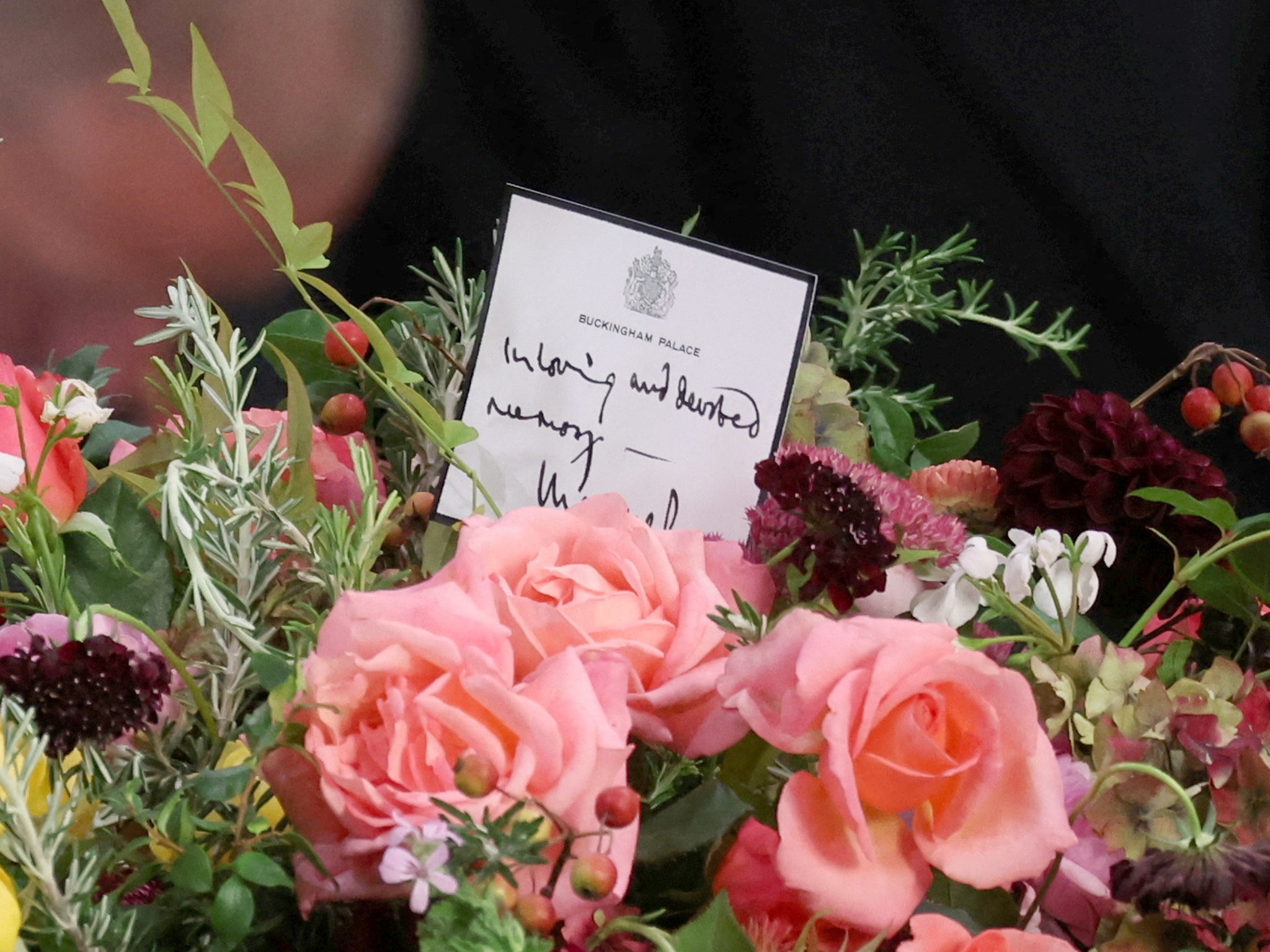
More than 100 heads of state and government from around the world were among the more than 2,000 members of the congregation dressed in black and military attire at Westminster Abbey.
Among them too were members of the royal family, there to say goodbye not only to a monarch but to someone close to their heart and the head of their family.
Later at a more intimate service in Windsor, members of the Queen’s family, royal estates and other attendees stood - many with their heads bowed - as the Queen’s coffin was lowered into the Chapel’s Royal Vault.
Here,The Independent examines the ceremony and some of the unique traditions in the final goodbye to Her Majesty.
The procession
It has been remarked that in many ways the Queen’s State Funeral is a military funeral. She was, after all, the head of the armed forces.
Royal Navy sailors pulled the two-and-a-half tonne State Ceremonial Gun Carriage bearing the Queen’s Coffin from Westminster Hall to Westminster Abbey. Others marched behind the carriage holding rope to act as brakes.
This has been a tradition since the State Funeral of Queen Victoria in 1901. Before that, the service was pulled by horses, but the cold of that day led the animals to rear up and Captain Prince Louis of Battenberg was concerned for the safety of the coffin.
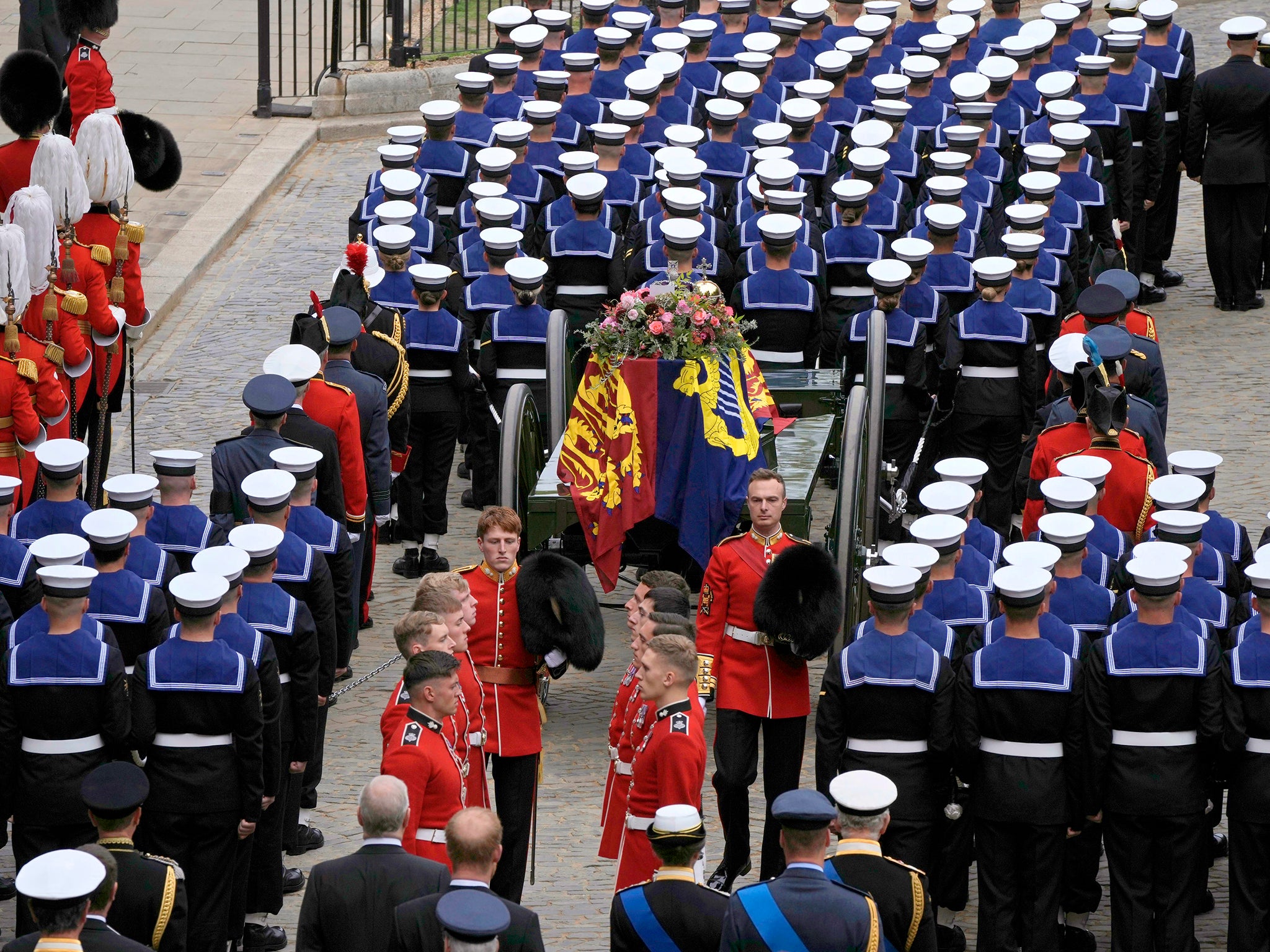
Prince Louis consequently approached Edward VII, the new king, and suggested that his men step in to avoid further complications. That way a tradition was born.
The Sovereign’s Guard has since hauled the carriages of former monarchs and other distinguished figures in British history with a white rope. Ninety-eight of them performed the duty on Monday, followed by another 40 in place behind to act as a brake also by holding a white rope.
The carriage is a field gun carriage that has been in the care of the Royal Navy since 1901, when it was removed from active service for Queen Victoria’s funeral. It was previously used for the funerals of King Edward VII, King George V, King George VI, Winston Churchill and Lord Louis Mountbatten.
The coffin
Draped in the Royal Standard, upon the Queen’s coffin also lie the Instruments of State - the Imperial State Crown on a velvet cushion, the Orb and the Sceptre.
The golden Orb, surmounted by a cross, symbolises Christianity and reminds the monarch that their power is derived from God. The Sceptre is a symbol of fairness, justice and governance. The State Crown is worn by the monarch at the end of the coronation ceremony and at formal occasions like the State Opening of Parliament.

At the King’s request, the wreath on top of the coffin contains rosemary, English oak and myrtle cut from a plant grown from myrtle in the Queen’s wedding bouquet.
It also contains flowers in shades of gold, pink and deep burgundy, with touches of white, cut from the gardens of royal residences, Buckingham Palace, Clarence House and Highgrove House.
Rosemary symbolises remembrance, myrtle is the symbol of a happy marriage and English Oak symbolises the strength of love. Also at the King’s request, the wreath was also made in a sustainable way, in a nest of English moss and oak branches.
The Service at Westminster Abbey
Before the service, Westminster Abbey’s tenor bell was tolled every minute for 96 minutes, marking the years of Queen Elizabeth II’s life. It is the largest of the Abbey’s ten bells and is traditionally tolled upon the death of a member of the royal family.
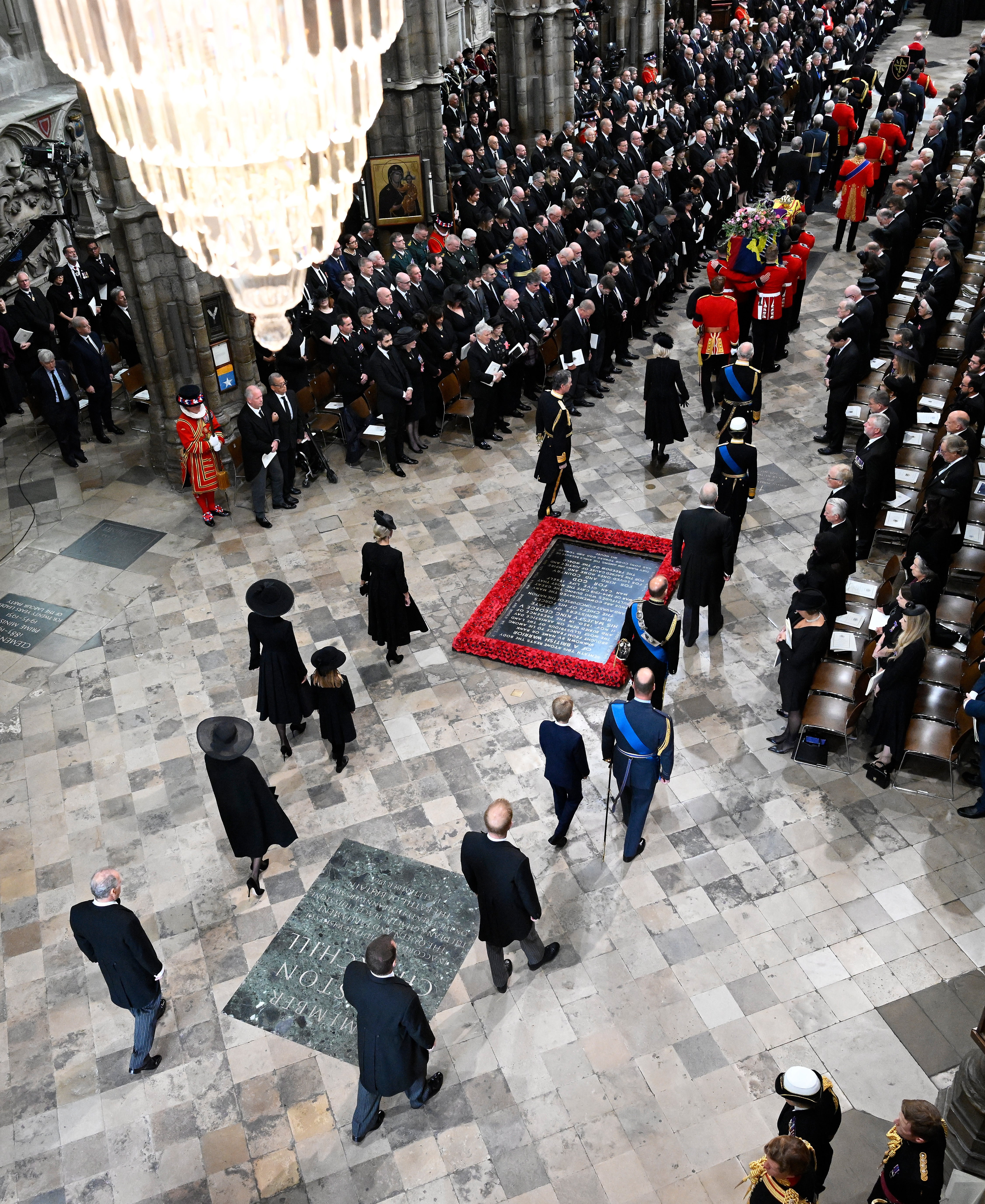
The royal family filed into the Abbey behind the coffin, which was carried by soldiers from the Queen’s Company, 1st Battalion Grenadier Guards, of which the late Queen was company commander.
Prince George and Princess Charlotte walked in between their parents behind the Queen’s coffin. The Prince of Wales is the heir-apparent to the throne, his son Prince George is second in line and his daughter Princess Charlotte is third in line.
The Archbishop of Canterbury, Justin Welby, gave the sermon on Monday.
“Her late Majesty famously declared on her 21st birthday broadcast that her whole life would be dedicated to serving the nation and commonwealth, rarely has such a promise been so well kept,” he told the congregation. “Few leaders receive the outpouring of love that we have seen.”
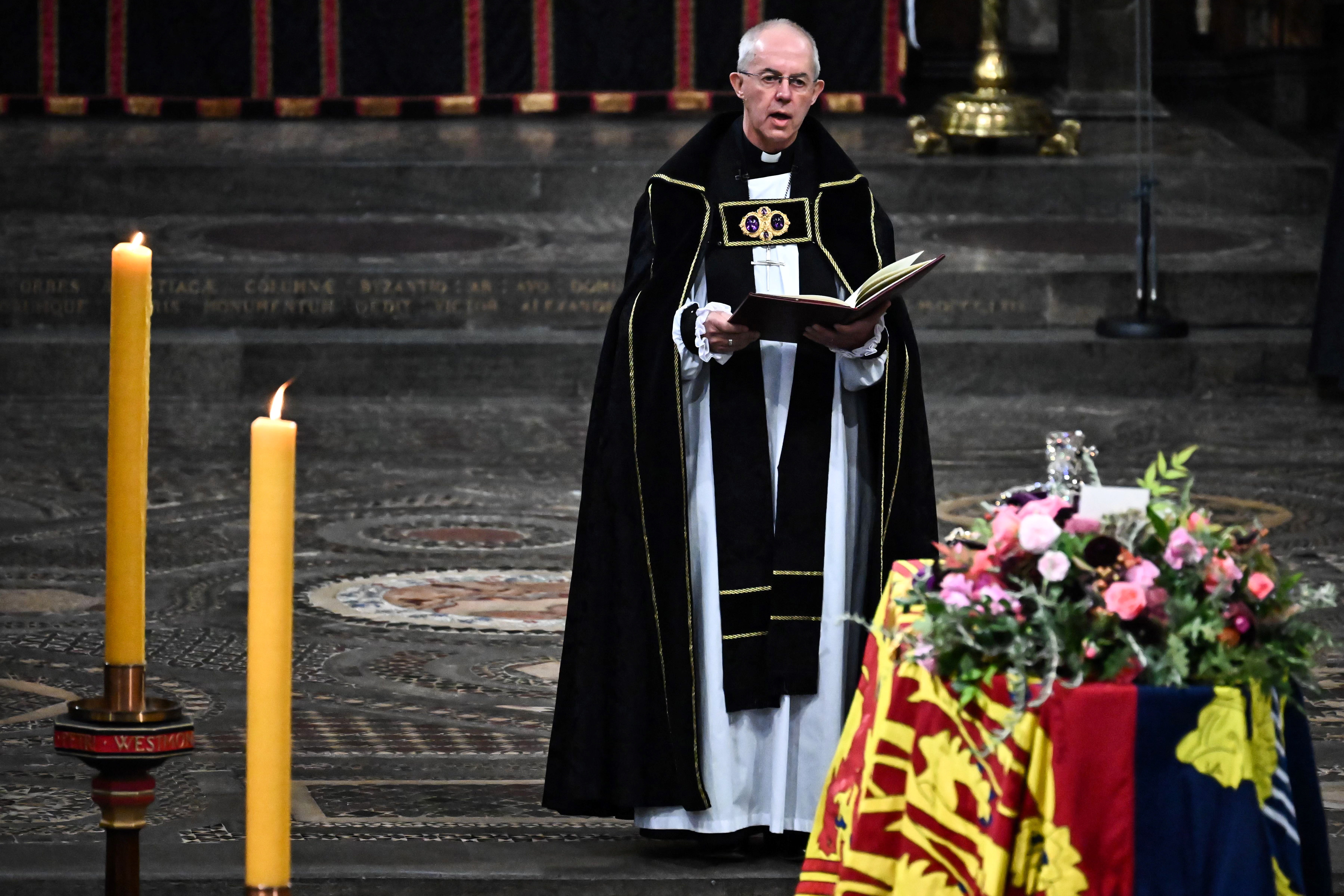
He added that those who “follow the Queen’s example, and inspiration of trust and faith in God, can say with her: ‘We will meet again’.”
His remarked echoed those made by the Queen to comfort people during the coronavirus pandemic, when lockdowns meant people could not be with loved ones.
The Very Reverend Dr David Hoyle MBE, Dean of Westminster, gave the bidding, while the Baroness Scotland of Asthal KC, Secretary-General of the Commonwealth, read the first lesson and Prime Minister Liz Truss read the second.
Members of foreign royal families, heads of state, and overseas government representatives were received at the Great West Door by the Dean and Chapter of Westminster and were conducted to their seats in the Lantern.
Six former prime ministers were among the mourners at the state funeral in Westminster Abbey. Boris Johnson, Theresa May, David Cameron, Gordon Brown, Sir Tony Blair and Sir John Major and their spouses were seated together for the service.
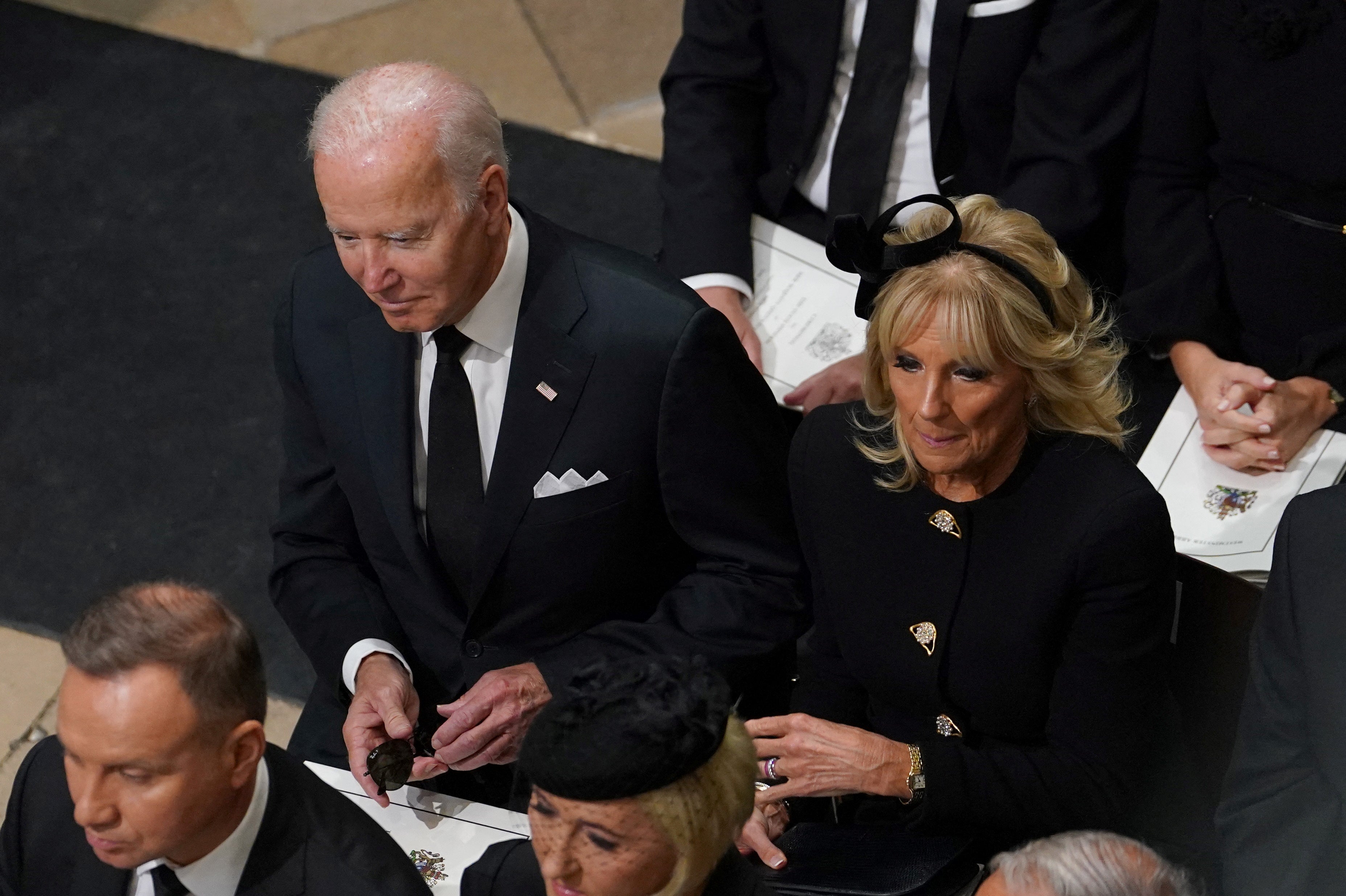
The vergers taking part in the funeral represented the Churches of Wales, Scotland, Northern Ireland and England.
In the middle of the Abbey floor, lies the tomb to the unknown soldier where the Queen laid flowers on the 100th anniversary of the armistice in 2018. The procession avoided the tomb as is it made its way through the Abbey.
Music
Towards the end of the service, the State Trumpeters of the Household Cavalry sounded the Cavalry Last Post before the nation fell silent for 2-minutes in remembrance of the Queen.
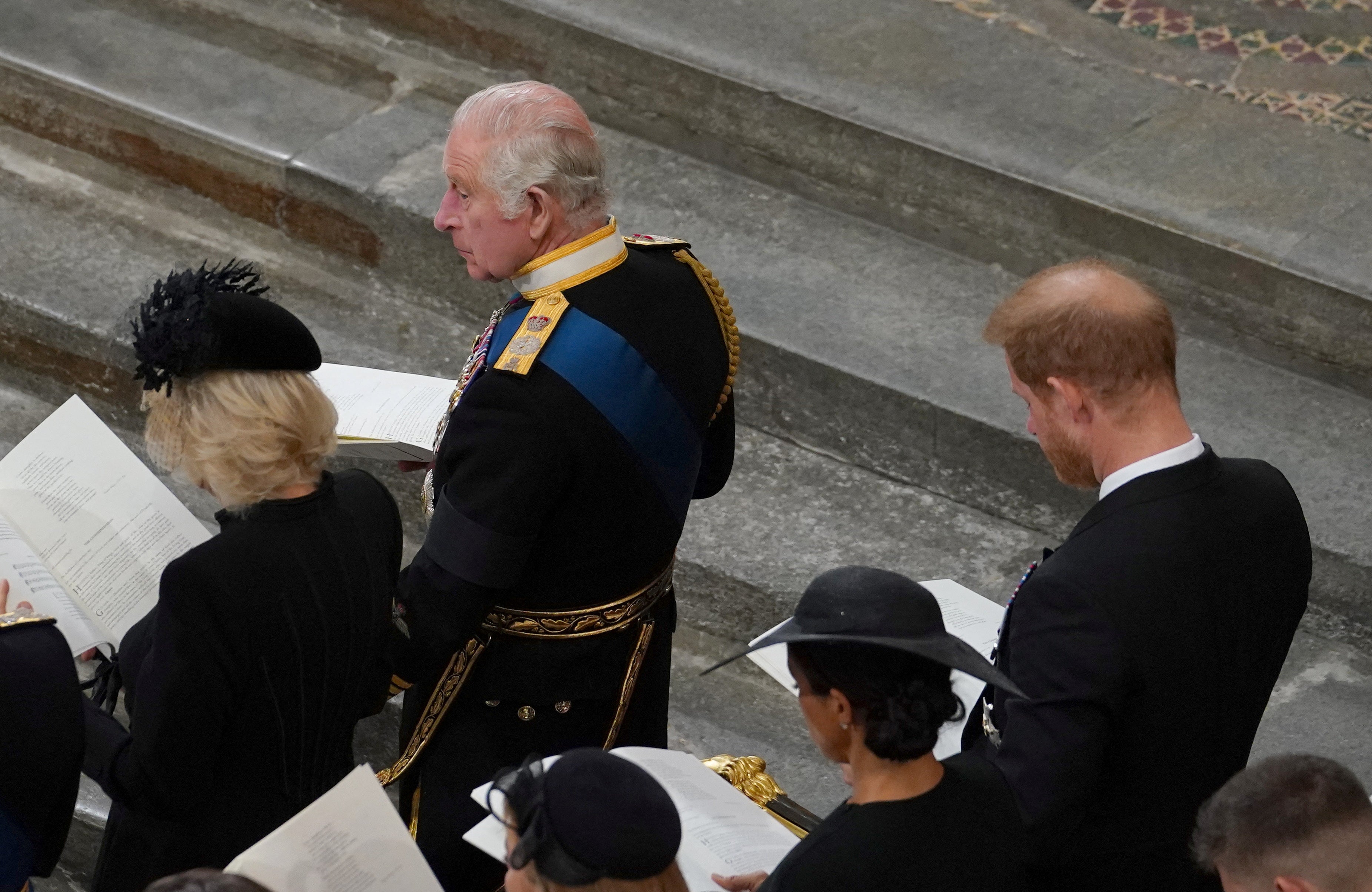
Westminster Abbey said on Monday that much of the music at the funeral was selected for its “special significance” to the Queen, and many of the choices have a long association with Westminster Abbey.
The hymns were sung by the choir of Westminster Abbey and the choir of the Chapel Royal, St James’ Palace. They included ‘The Lord’s My Shepherd’ which was sung at the Queen’s wedding to Prince Philip in the Abbey in 1947 and ‘Love Divine, all Loves Excelling’ which was sung at the Prince and Princess of Wales’ wedding in 2011.
The anthem ‘O taste and see’ was composed by Ralph Vaughan Williams for the Queen’s coronation in the Abbey in 1953. His ashes are buried in the church.
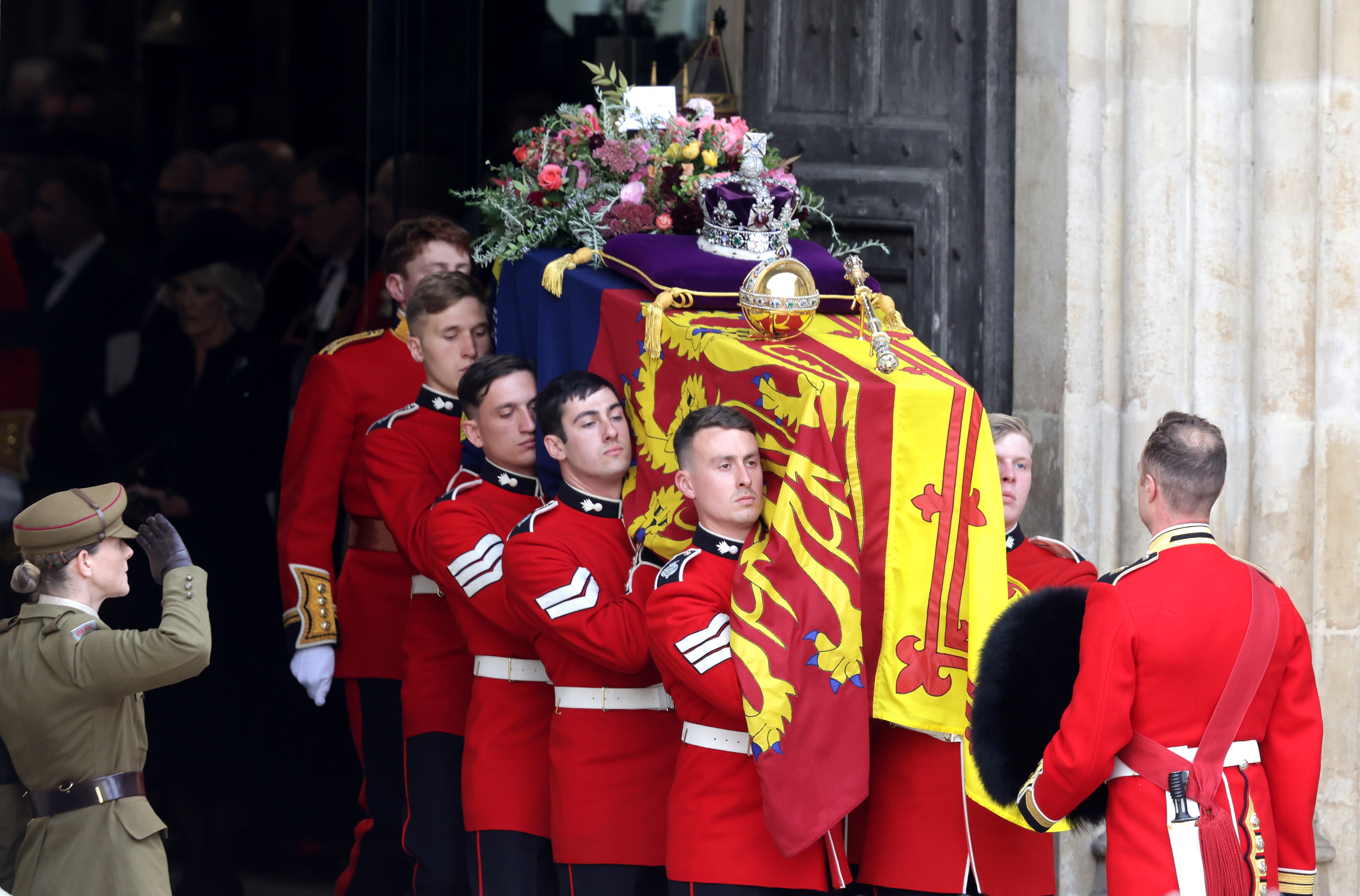
The Queen’s Piper helped close the funeral with a rendition of the traditional piece Sleep, Dearie, Sleep.
The State Trumpeters of the Household Cavalry were led by Trumpet Major Julian Sandford. The Fanfare Team of the Household Division Bands was conducted by Lieutenant Colonel David Barringer MBE, Commanding Officer, Household Division Bands.
The organ was played by Peter Holder, Sub-Organist, Westminster Abbey.
To St George’s Chapel, Windsor
Following the ceremony at Westminster Abbey the Queen’s coffin made its final journey through central London to Wellington Arch at Hyde Park Corner, as Big Ben tolled. The coffin was then driven in the state hearse to Windsor as people lined the streets along its path, with many throwing flowers.
The hearse was designed by the Royal Household and Jaguar Land Rover - the firm that made the Duke of Edinburgh’s Land Rover hearse - and the Queen was consulted on the plans.
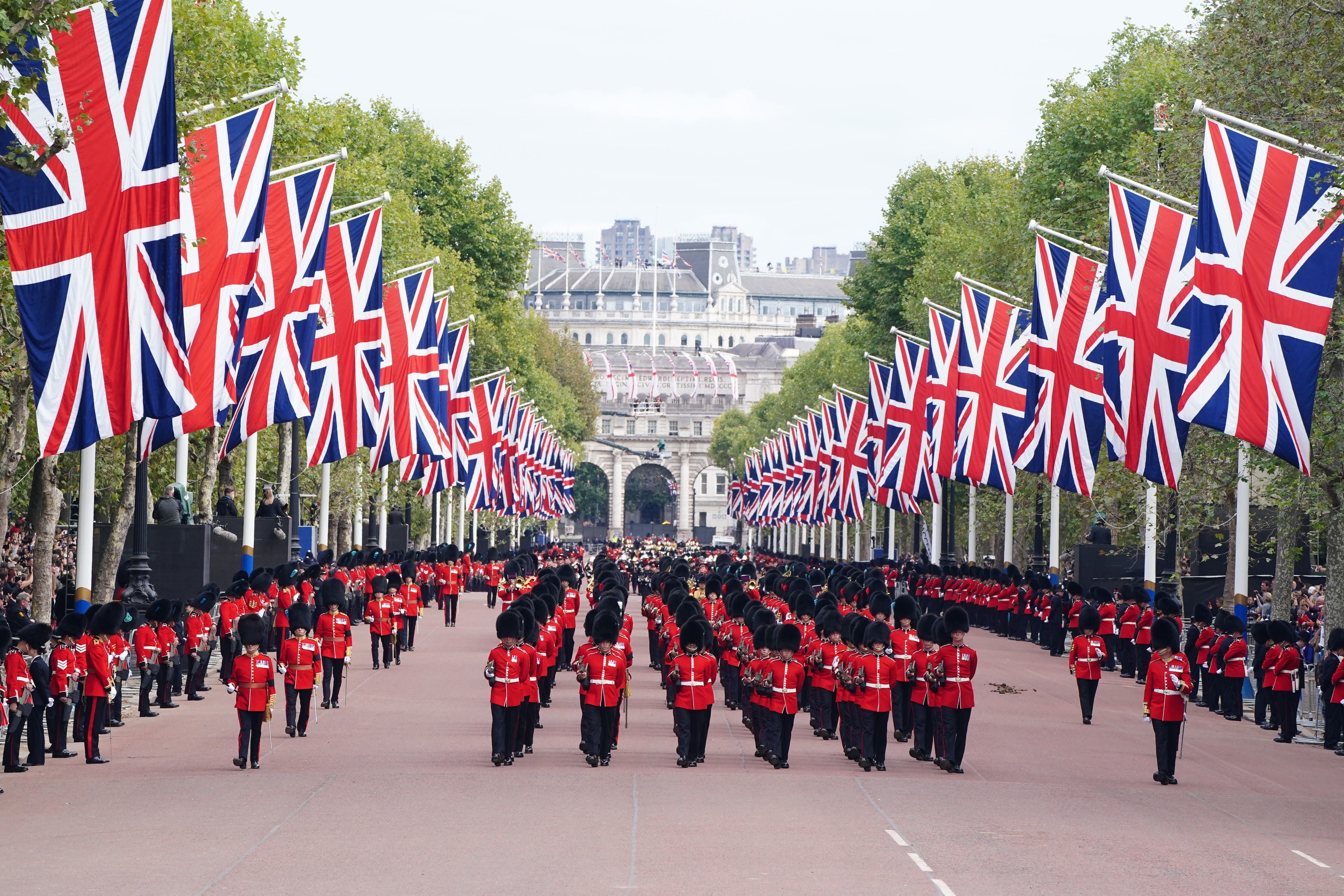
The procession, which was a mile and a quarter long, included representatives of the army, navy and royal air force, as well as armed forces from the Commonwealth countries. Members of the military carried their arms backwards in a sign of respect and mourning.
They were wearing the “ER” royal cypher, which stands for Elizabeth Regina, for the last time. The new cypher will read CR, for Charles Rex.
After travelling up Whitehall where many of the offices of government are located, the procession went through Horse Guards Parade where Her Majesty attended her birthday parade for years.
It then went up to Buckingham Palace, the sovereign’s London residence, passing Green Park and the Commonwealth memorial gates up to Wellington Arch.
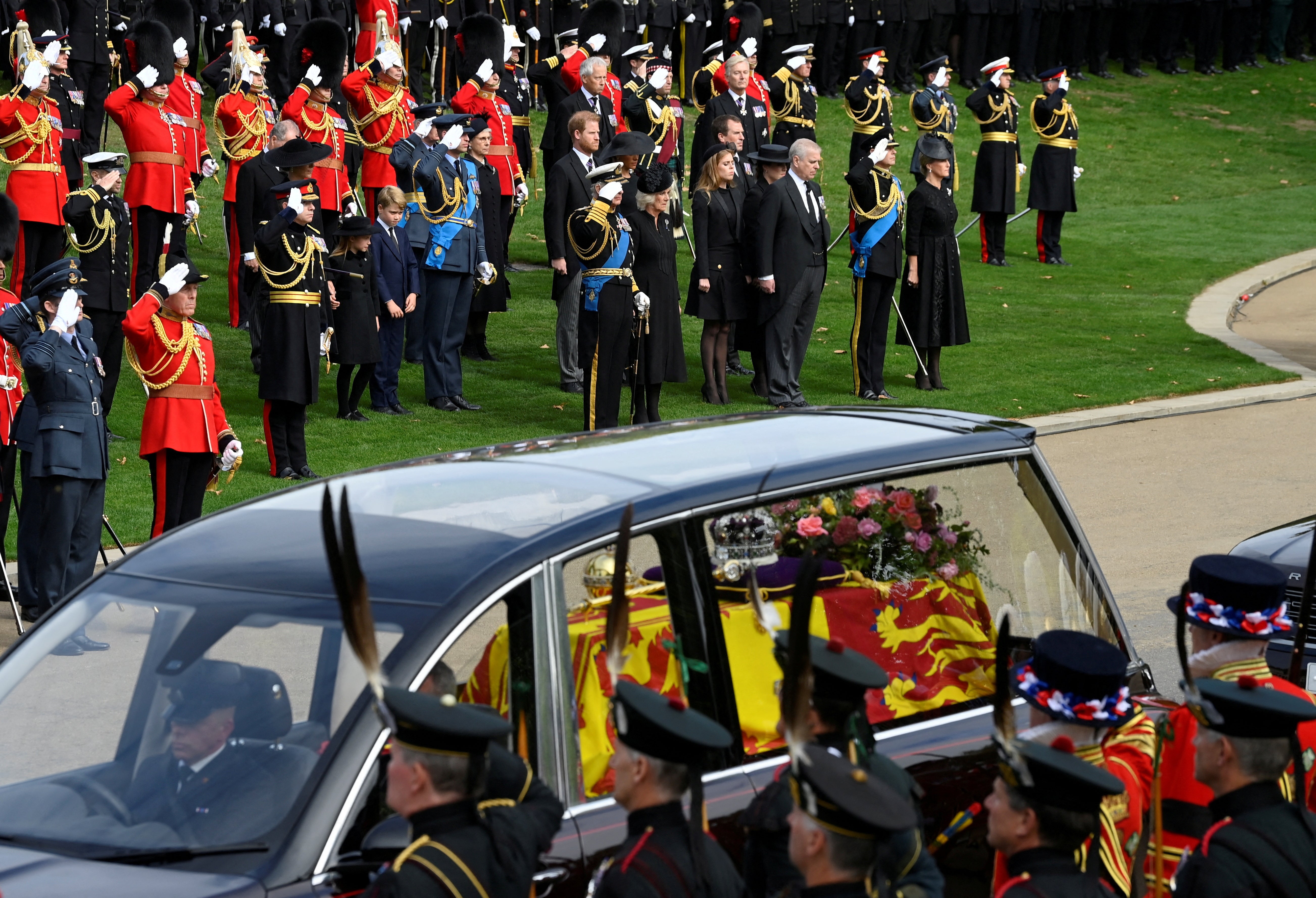
The Committal Service at St George’s Chapel
The Committal Service at St George’s Chapel in Windsor was a smaller more intimate ceremony and included many of those who worked on the Queen’s estates. Some of those in attendance could be seen wearing the Royal Victorian Order, which was in the personal gift of the late Queen.
Just last year, the Queen sat alone inside the very same Chapel during the funeral of her husband Prince Philip.
As the Queen’s coffin approached the Chapel the minute gun fired on the minute and the Sebastopol Bell and the Curfew Tower Bell tolled five seconds afterwards. Pipers played ‘The Skye Boat Song’ as the procession made its way up the Long Walk.
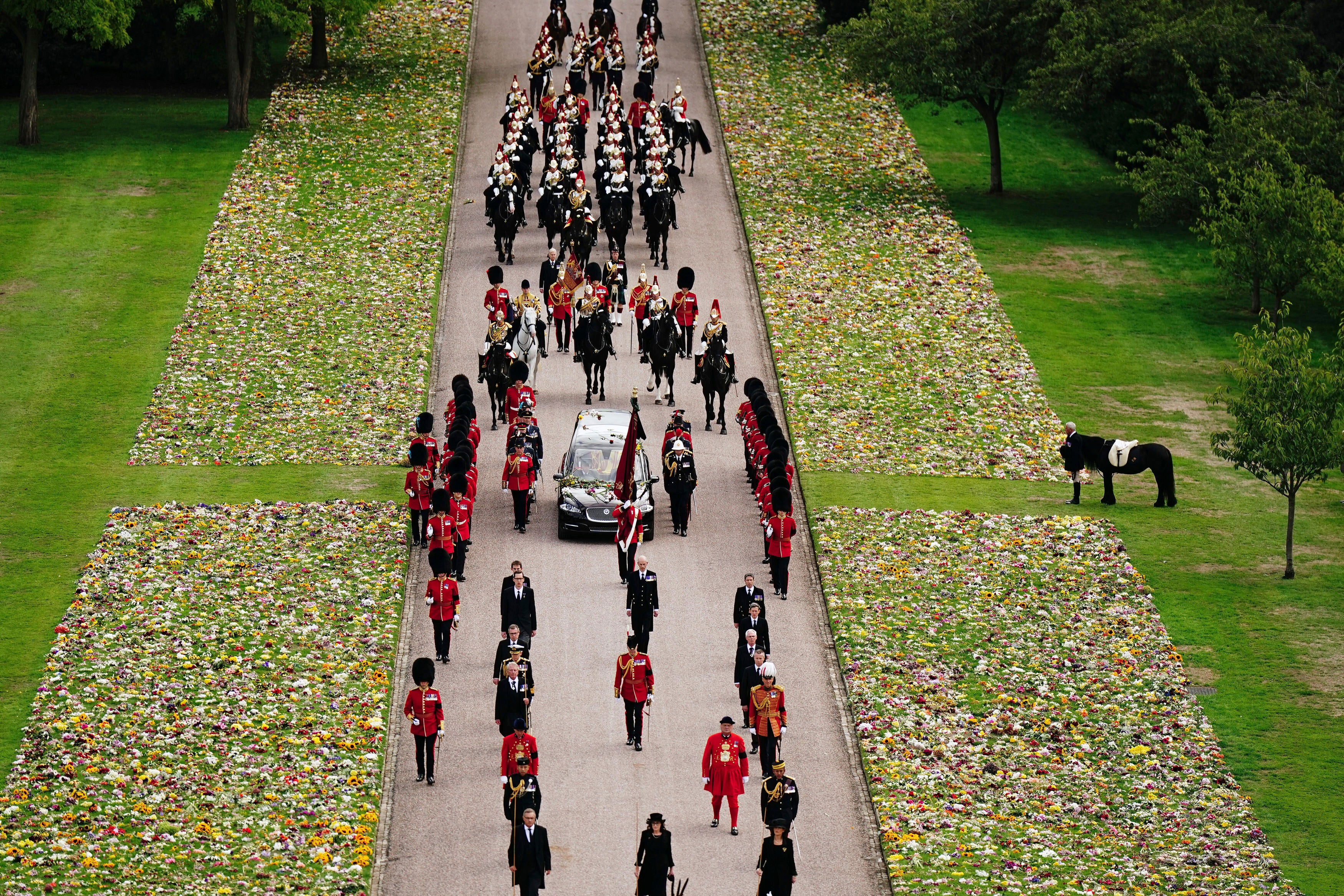
Flowers brought by members of the public in tribute to the Queen had been laid on the sides of the Long Walk as if they were formal gardens.
The Queen’s fell pony, Emma, stood as the procession went past, as did two of her beloved Corgis, Sandy and Mick.
Senior members of the royal family followed the coffin up the steps of St George’s Chapel, which was carried once again by soldiers from the Queen’s Company.
Among the music chosen for the Committal Service was ‘The Russian Contakion of the Departed’, a version edited by Sir Walter Parratt who was a sometime organist at St George’s Chapel a century ago.
Reading the bidding, the Dean of Windsor, said: “In the midst of our rapidly changing and frequently troubled world, her calm and dignified presence has given us confidence to face the future, as she did, with courage and with hope.”
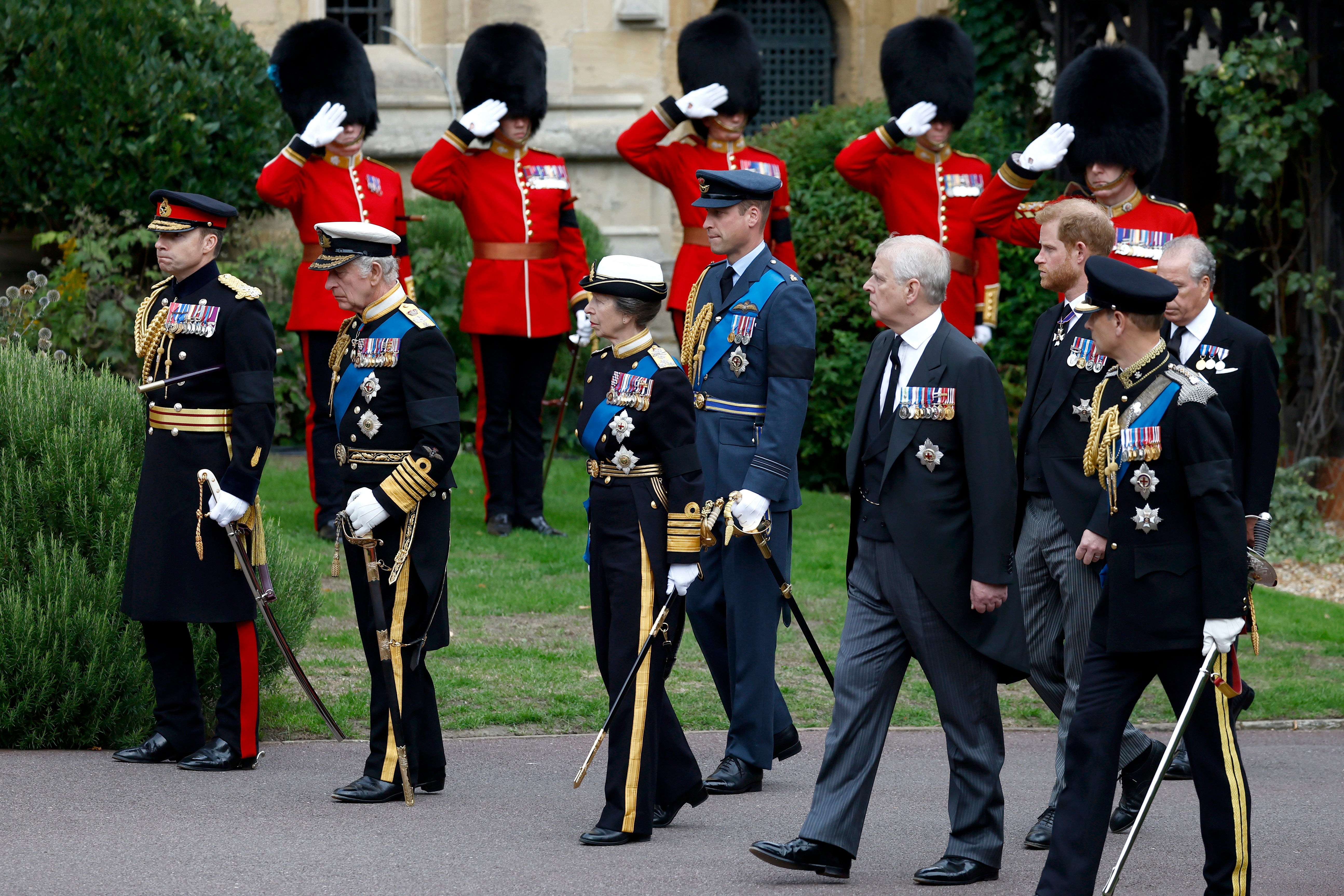
The service also included a reading from the Book of Revelation that was read at the funerals of the late Queen’s father, George VI, and her grandfather, George V.
The congregation stood in silence as the Instruments of State - the Crown, the golden Orb, and Sceptre - which were received by the Queen at her coronation in 1953, were taken from the coffin by the Queen’s Bargemaster and a Serjeant of Arms and placed on the altar of St George’s Chapel by the Dean of Windsor.
The King then placed The Queen’s Company Camp Colour of the Grenadier Guards on the Coffin. Traditionally the Camp Colour is used to identify the location of a commanding office. The Grenadier Guards are the most senior of the Foot Guards regiments, and the Queen was their Colonel in Chief. They will retain the late Queen’s name even after her death in her honour.
The Lord Chamberlain, the most senior official in the late Queen’s royal household, then “broke” his Wand of Office and placed it on the coffin. That signified the end of one reign and the beginning of another. Both the Camp Colour and the Wand of Office are buried with the coffin.
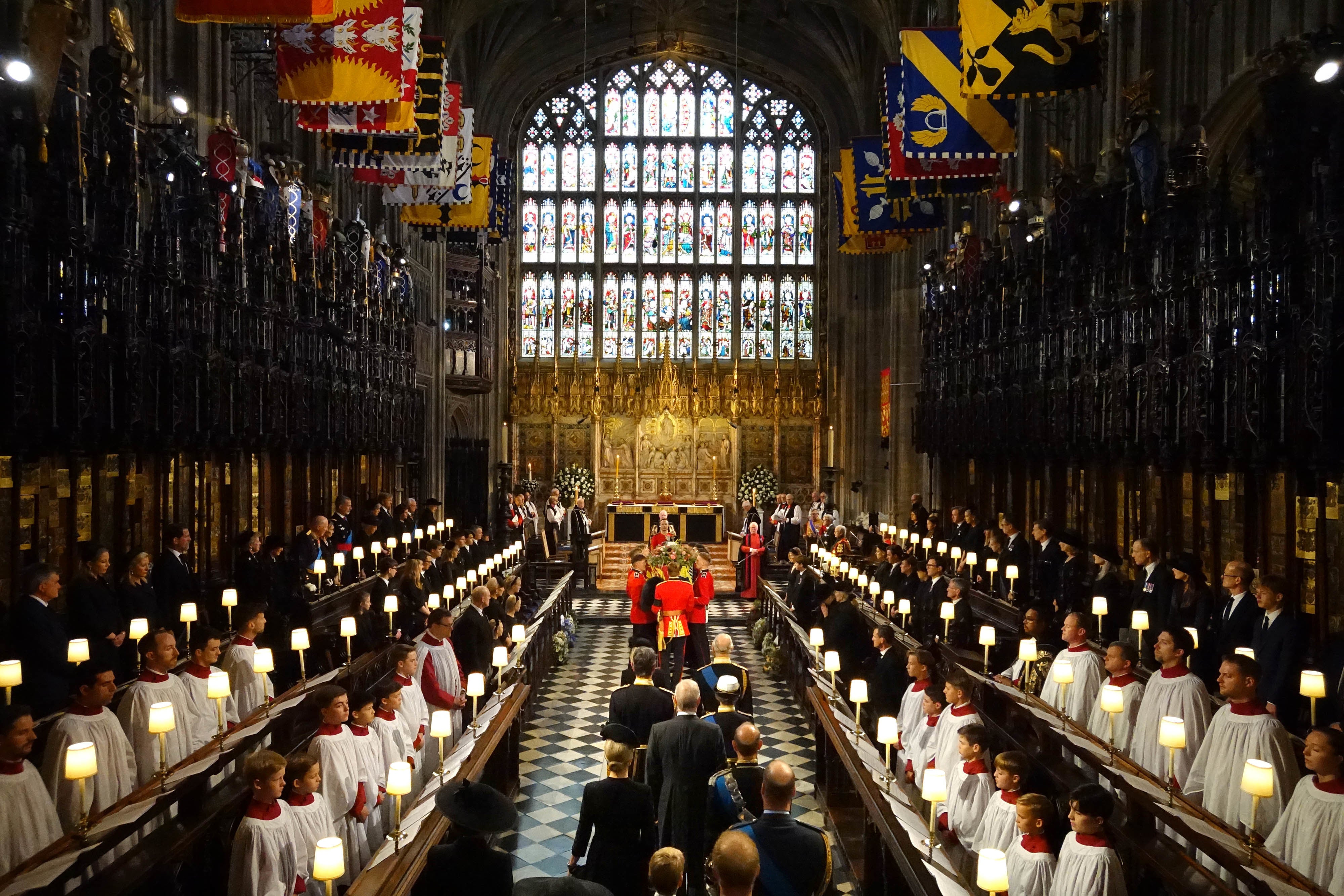
As the coffin was lowered into the Royal Vault the Dean of Windsor read The Psalm 103. 17. The Garter King of Arms then proclaimed the styles and titles of Queen Elizabeth II and the Queen’s Piper played a lament.
The service drew to a close with the congregation singing the National Anthem before King Charles and The Queen Consort left the Abbey followed by senior royals.
Press Association contributed reporting.
Join our commenting forum
Join thought-provoking conversations, follow other Independent readers and see their replies
Comments
Bookmark popover
Removed from bookmarks